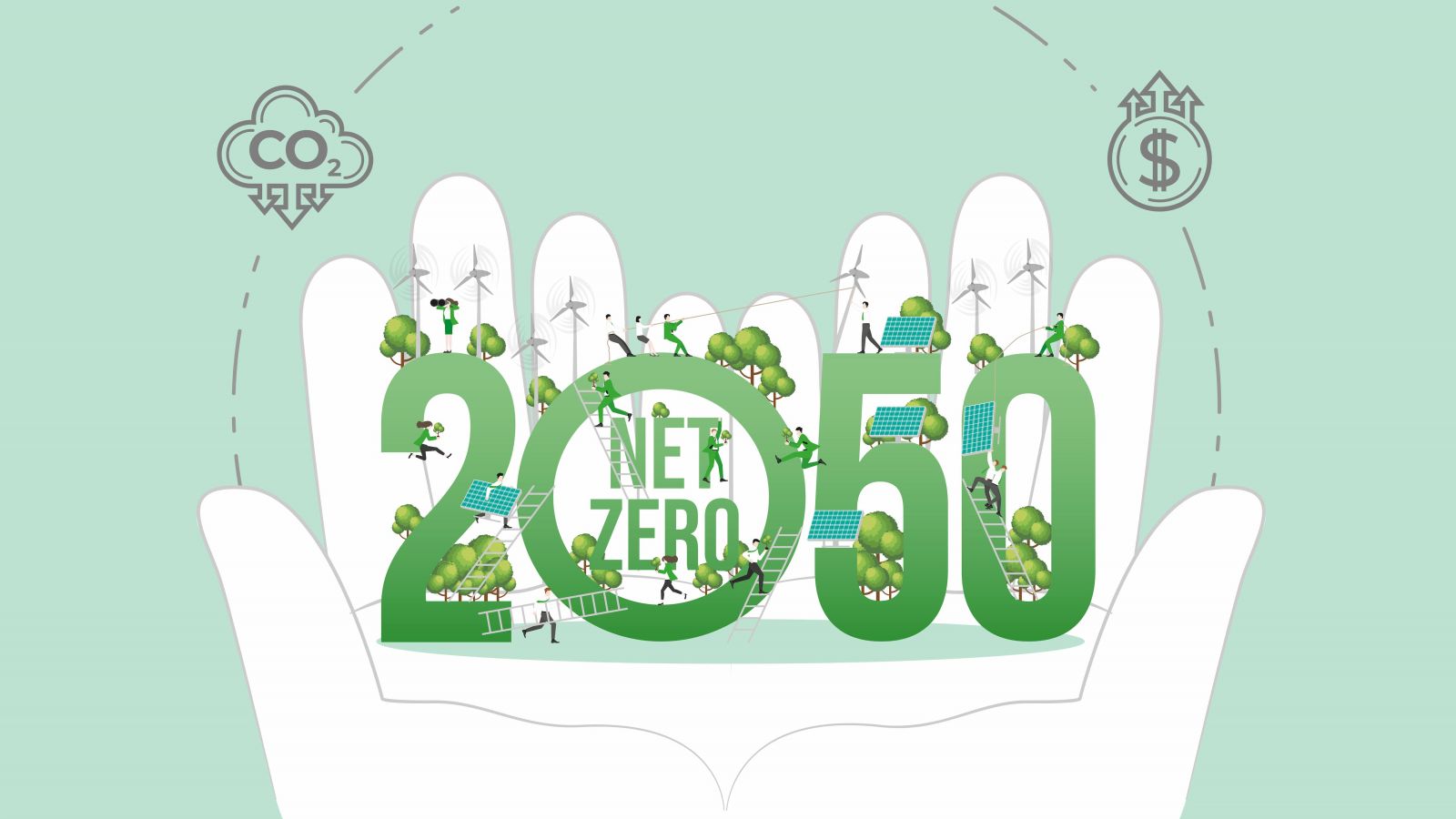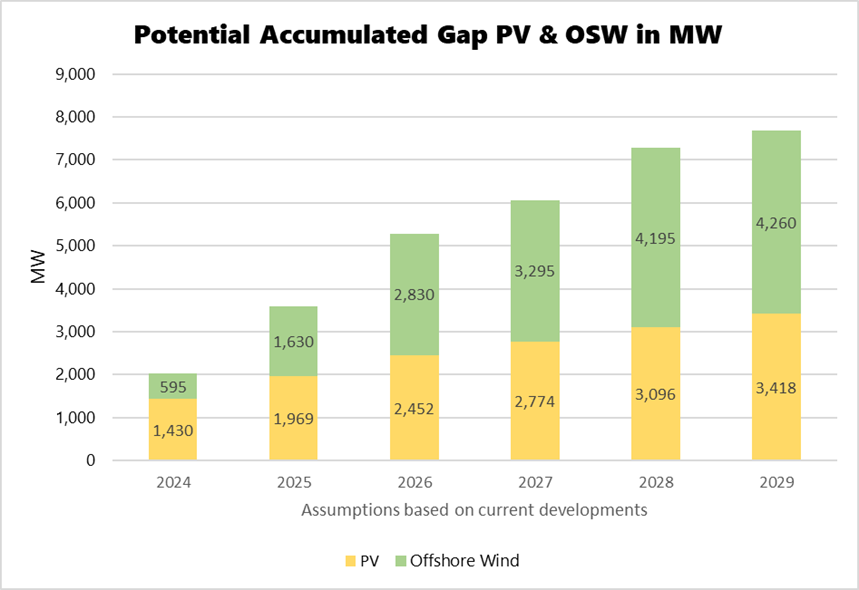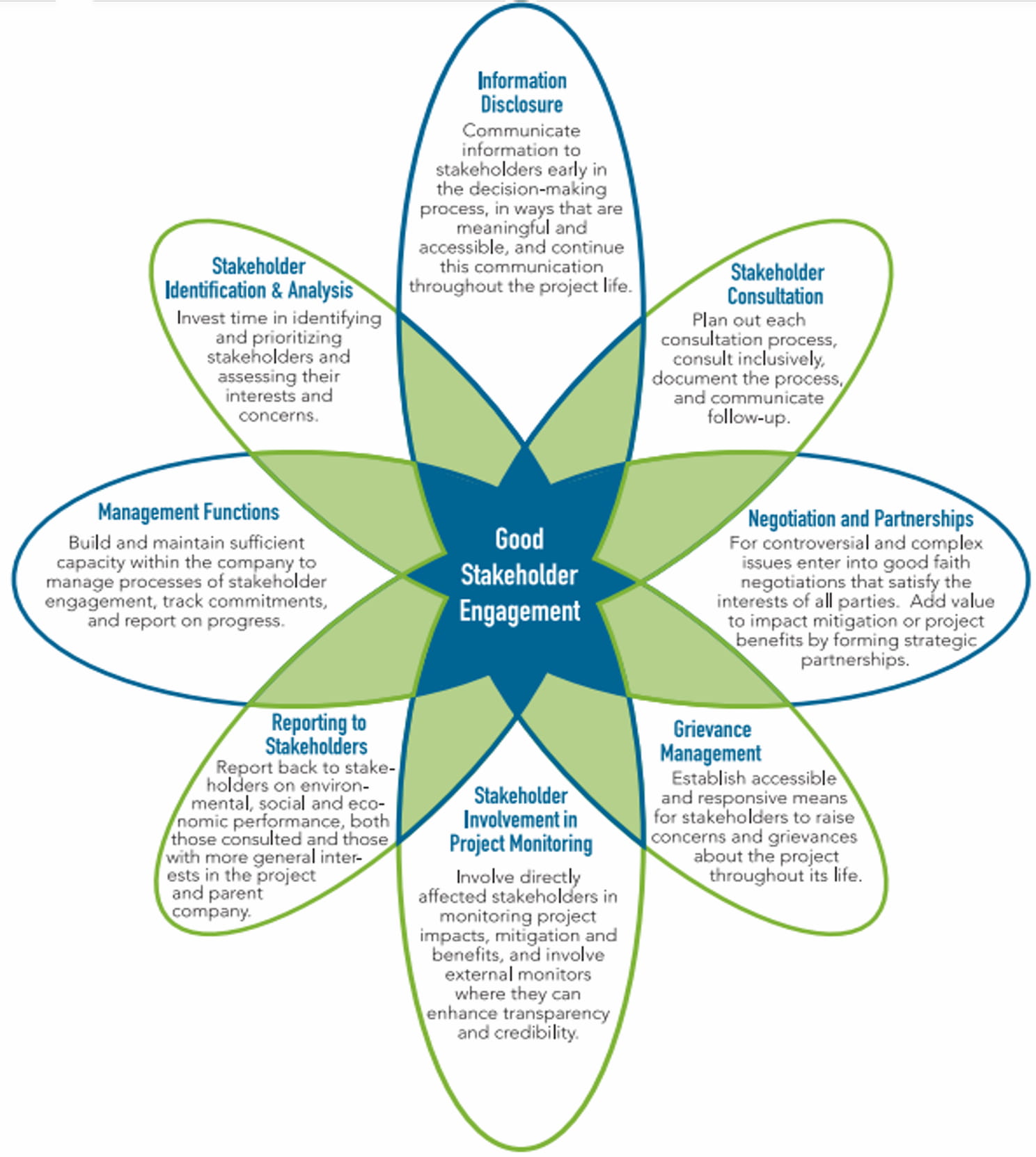Sustainability & CSR
Unintended consequences
Implications of insufficient guidelines for stakeholder engagement in Taiwan’s renewable energy market.
By James McCatherin

The importance and implications of good stakeholder engagement practices in Taiwan are apparent. In a May 2024 report published by the ECCT, industry leaders emphasized that current guidelines for stakeholder engagement in Taiwan’s renewable energy industry are insufficient and potentially damaging to the industry as a whole. As noted in the report, ineffective stakeholder engagement in green energy projects may result in project abandonment, financial losses, labour expenses, equipment standby costs, storage expenditures, and missed revenue opportunities, all of which hinder progress towards established energy goals. These setbacks add avoidable costs to renewable energy initiatives and should be minimized. It is crucial for both the green energy sector and the Taiwanese government to establish a necessary mechanism and regulatory framework for enhancing stakeholder engagement practices.

Photo courtesy of Ørsted
The timely and efficient rollout of green energy in Taiwan, a clear policy goal of Taiwan’s central government, is essential to Taiwan’s economy, environment, and energy security. With Taiwan making the promise for net zero emissions, facing energy shortages, increased demand for renewable energy from the burgeoning AI and technology sectors, and a lack of energy security, the success of Taiwan’s renewable energy industry is more imperative than ever. Despite setting promising renewable energy goals of 27GW by 2025 (REDA, 2019, as amended), now as of June 2024, Taiwan’s installed capacity for renewable energy stands at 19.587GW. With a number of instances of stakeholder related conflict surfacing locally in different regions of Taiwan, the argument for better engagement and policy design for stakeholder engagement by the central government is called on by the developers and the industry. It is clear that Taiwan will fall considerable short of its original goal. Beyond 2025, current market developments indicate a continued increase in the gap between Taiwan’s renewable energy goals and actual installed capacity. Based on current assumptions by NIRAS, Taiwan may see a nearly 8GW gap between established energy goals and actual installed capacity for photovoltaic (PV) and offshore wind (OSW) by 2029 compared to the Taiwanese government 2030 goals for offshore wind and PV.(See Figure 1)

Figure 1: Potential accumulated gap (goals, installed capacity) for PV and OSW in Taiwan
While there remain many variables at play which could change the outcome energy rollout, the clear gap between Taiwan’s renewable energy goals and installed capacity points significant challenges within the industry. Amongst other market challenges, a lack of robust standards for stakeholder engagement in the Taiwanese market perpetuates market risk and is detrimental to Taiwan’s greater energy transition.
Disagreements, lost projects
Without robust guidelines and resources for stakeholder engagement in the Taiwanese market, projects are more likely to simply inform as opposed to adequately engaging with stakeholders. There is also increased likelihood that projects will be less proactive in their initial engagement with stakeholders, choosing not to engage until farther along in the project cycle. In recent years, a number of RE projects in Taiwan have been faced with numerous documented stakeholder engagement conflicts which have resulted in both delayed and cancelled projects.
The breakdown of the Taoyuan Guanyin project is a vivid case where a better outcome may have been possible with improved stakeholder engagement. In 2022, this 350MW project, which had already secured rights to develop the area, passed the Environmental Impact Assessment (EIA) and was awarded grid capacity in 2018, and invested considerably into the project, was unexpectedly denied a key permit well into the development process, officially due to aviation concerns. The project has since been scrapped entirely. This is a clear example where a lack of engagement and communications between parties led to a very unfortunate outcome which could have been mitigated.
In 2021, a published Offshore Wind Development Activity Plan as part of the EIA process by a developer offshore from Keelung’s ‘Three North Islands’ area created strong objections amongst fishermen and got embroiled in a media frenzy. Despite the area never receiving approval for development, the incident resulted in greater distrust between project owners, fisheries, and authorities and likely had an adverse effect on industry perception. This scenario, which makes it harder for other projects going forward in that area, could have likely been mitigated if effective protocol for stakeholder engagement and communication had been implemented from the beginning. This would have avoided a feeling of not being engaged and consulted by other maritime users – and given the project a platform to find suitable boundaries.
Unfortunately, these are not the only two examples of Taiwan renewable energy projects whose stakeholder related issues have resulted in increased costs, delays, or project failure. Without clear guidelines or standards for stakeholder engagement in Taiwan, project owners lack guidance and resources for effective stakeholder engagement in a local context. The result is an increased risk of stakeholder-related consequences which create risk at the individual project level, and for the industry as a whole.
Recognizing this, in 2023 The European Chamber of Commerce (ECCT) Wind Energy committee formed a working group to address concerns with stakeholder engagement guidelines in Taiwan. This collaboration which included 33 renewable energy industry experts from 27 local and international organizations culminated in the Best Practice Report for Stakeholder Engagement and Permitting (ECCT, 2024), as released by the ECCT in June 2024. Report findings confirmed that Taiwan’s limited guidelines and resources for stakeholder engagement expose renewable energy projects to unnecessary risk and are likely detrimental to the industry and the governments net zero goals as a whole.
International standards for stakeholder engagement
The international community has come to understand the benefits and importance of stakeholder engagement processes in infrastructure projects. As such, emphasis on effective stakeholder engagement has become common practice within the private sector and especially amongst financial institutions investing in infrastructure projects such as renewable energy. As a result, the global community has increasingly focused on establishing set standards for stakeholder engagement planning and practices. Key contributors to these efforts include the World Bank, International Finance Corporation (IFC), Organization for Economic Co-operation and Development (OECD) and others. Efforts from these organisations have been instrumental in shaping norms and guidelines for effective stakeholder relations internationally. The following diagram provided in the IFC’s Stakeholder Engagement: A Good Practice Handbook for Companies Doing Business in Emerging Markets(Sequeria & Warner, 2007)highlights 8 key components of effective stakeholder engagement.

Figure 2: Components of Good Stakeholder Engagement(Sequeria & Warner, 2007)
Clear guidelines and related monitoring of stakeholder engagement for renewable energy projects not only ensure efficacy and sustainability, but also minimize risk. Findings from the ECCT report demonstrated that clear stakeholder engagement processes have proven to mitigate risks and facilitate smoother implementations of green energy projects. Amongst other risks, inadequate stakeholder practices have been shown to result in distrust, communication gaps, and subsequent conflicts. Such challenges have frequently led to project delays, increased expenses, and negative public perception. These factors significantly heighten risks at both project-specific and market-wide levels, potentially affecting a market’s ability to meet its energy goals.
Guidelines for stakeholder engagement in Taiwan
As it stands, Taiwan lacks clear processes and guidelines for stakeholder engagement. A gap analysis policy review of standards for stakeholder engagement in Taiwan (ECCT, 2024) found that guidelines for stakeholder engagement in Taiwan are lacklustre when compared with international standards. To begin with, current regulations lack a clear definition of who is and is not a stakeholder for renewable energy projects in Taiwan. This problem is twofold; Individuals who are not realistically influenced by a project can claim stakeholder rights and potentially de-rail and project. Secondly, without a clear definition in place, it is much more likely that individuals who are clearly affected by a project are not engaged as they should be or are excluded from the process entirely.
Existing Taiwanese regulations for stakeholder engagement in renewable energy projects are primarily limited within the scope of the Environmental Impact Assessment (EIA). Although Taiwan’s EIA regime is generally considered robust within the Asia-Pacific region, guidelines for stakeholder engagement in the EIA tend to lack specificity and clear processes. The process also tends to lack sufficient resources for project owners that are necessary to conduct effective stakeholder engagement. The result is that project owners are often left scrambling and on their own without the resources necessary to accurately identify and effectively engage stakeholders. In addition, there are very few guidelines for stakeholder engagement outside the EIA. This leads to a greater risk of legitimate stakeholders being left out of engagement; this has also led to stakeholders not included within EIA scope to force themselves into the process due to a lack of other options. This has in previous cases created complications and delays within the EIA process.
The standards gap
Renewable energy is an international industry; Risks associated with poor stakeholder engagement practices go far beyond the scope of an individual project. This is particularly true in the case of Taiwan’s offshore wind industry, which despite its high localisation requirements, is heavily dependent on overseas project owners, investors and suppliers for its success. The complexity and scale of offshore wind development make for a particularly high barrier to entry for new markets. As a result, Taiwan’s emerging offshore wind industry has received significant support from experienced players in European markets where offshore wind is a mature technology. This means that a majority of projects in Taiwan are international projects, with a high percentage of resources, knowhow, and financing coming from overseas players. The international nature of these projects makes the implications of poor stakeholder engagement much more apparent, especially in project financing.
International financial institutions are held to high practice standards; they are also responsible for the practices of those they are lending to. Most notable amongst international standards are the IFC’s ‘Equator Principles’, a risk management framework adopted by financial institutions, for determining, assessing and managing environmental and social risk in project finance. Currently, 130 of the world’s largest financial institutions are signatories to the Equator Principles (IFC, 2024), are legally obliged to uphold compliance. Large scale international lenders are required to uphold standards defined by the Equator Principles, and face consequences for failure to do so. For this reason, international banks cannot simply follow local regulations for due diligence. In the case of Taiwan’s offshore wind industry, lenders often request additional due diligence and monitoring as international best practice standards tend to go beyond the scope of Taiwanese standards to reduce risk. For example, projects receiving funding from international lenders are generally required to conduct a supplemental Environmental Social Impact Assessment (ESIA) beyond the initial scope of the EIA as defined by Taiwan authorities.
Currently, a lack of standards and guidelines for stakeholder engagement in the Taiwanese market is thus easily perceived as a clear risk for international players who are considering investment in the market. For international lenders, the risk of poor stakeholder engagement includes not only digesting project risk that may come with failed stakeholder engagement, but also the subsequent legal and reputational risks which may arise if it is discovered that money lent is being used unsustainably. If lenders are not comfortable with practices and regulations in a given market, they are likely to be more hesitant to invest. While Taiwan has been an early frontrunner in the APAC market, other markets in the region are catching up as Taiwan’s market slows down; there are already clear signs that investors are looking elsewhere.
Best practice report
The Best Practice Report for Stakeholder Engagement and Permitting included reported industry challenges and related recommendations from a team of leading experts in Taiwan’s wind energy industry. This included the following six recommendations, which apply international best practice standards to the local context in Taiwan.
Table 1: Stakeholder recommendations from Best Practice Report for Stakeholder Engagement and Permitting (ECCT,2024)

Common goal
The detrimental nature of ineffective guidelines and standards for stakeholder engagement are apparent. With the private sector and the Taiwanese government both sharing the common goal of a successful and timely green energy rollout, it is crucial for both the green energy sector and the Taiwanese government to establish a necessary mechanism and regulatory framework for enhancing stakeholder engagement practices. This is only possible with collaboration and objective discussion between private industry and regulatory bodies which recognizes the common goal of a timely and sustainable rollout of renewable energy.
James McCatherin is a Consultant for Renewables and Sustainability Advisory at NIRAS. He is an expert in stakeholder engagement, permitting and policy within Taiwan's renewable energy industry. James is the primary author of the Best Practices report.